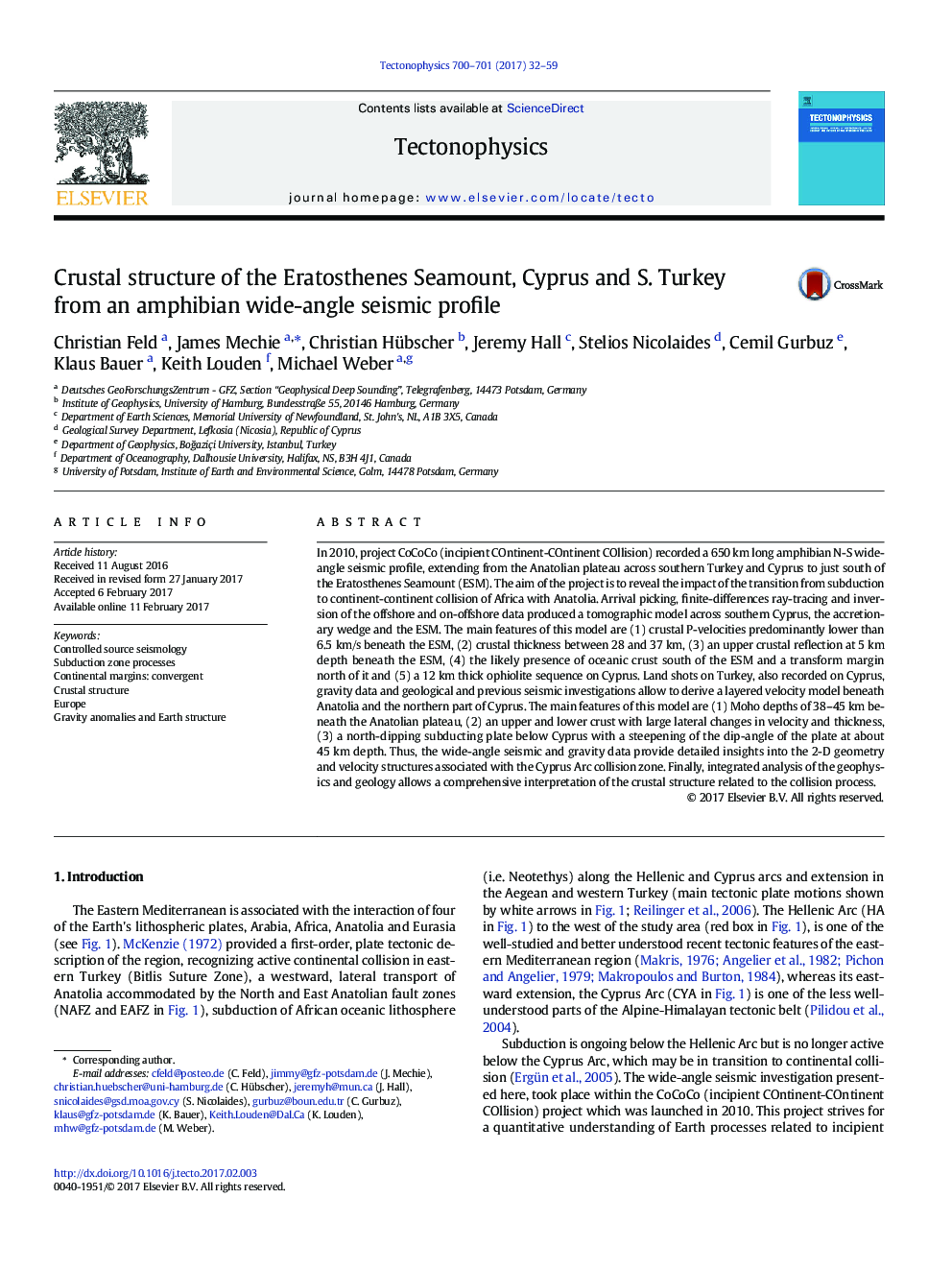| کد مقاله | کد نشریه | سال انتشار | مقاله انگلیسی | نسخه تمام متن |
|---|---|---|---|---|
| 5781853 | 1636702 | 2017 | 28 صفحه PDF | دانلود رایگان |

- A N-S crustal model from the Eratosthenes Seamount to central Anatolia is presented.
- The crustal model which crosses Cyprus is based on seismic and gravity data.
- With Moho depths of 32-35Â km the Eratosthenes Seamount is a continental block.
- Evidence is provided for a north-dipping subducting plate beneath Cyprus.
- Beneath the Anatolian plateau the Moho occurs at 38-45Â km depth.
In 2010, project CoCoCo (incipient COntinent-COntinent COllision) recorded a 650Â km long amphibian N-S wide-angle seismic profile, extending from the Anatolian plateau across southern Turkey and Cyprus to just south of the Eratosthenes Seamount (ESM). The aim of the project is to reveal the impact of the transition from subduction to continent-continent collision of Africa with Anatolia. Arrival picking, finite-differences ray-tracing and inversion of the offshore and on-offshore data produced a tomographic model across southern Cyprus, the accretionary wedge and the ESM. The main features of this model are (1) crustal P-velocities predominantly lower than 6.5Â km/s beneath the ESM, (2) crustal thickness between 28 and 37Â km, (3) an upper crustal reflection at 5Â km depth beneath the ESM, (4) the likely presence of oceanic crust south of the ESM and a transform margin north of it and (5) a 12Â km thick ophiolite sequence on Cyprus. Land shots on Turkey, also recorded on Cyprus, gravity data and geological and previous seismic investigations allow to derive a layered velocity model beneath Anatolia and the northern part of Cyprus. The main features of this model are (1) Moho depths of 38-45Â km beneath the Anatolian plateau, (2) an upper and lower crust with large lateral changes in velocity and thickness, (3) a north-dipping subducting plate below Cyprus with a steepening of the dip-angle of the plate at about 45Â km depth. Thus, the wide-angle seismic and gravity data provide detailed insights into the 2-D geometry and velocity structures associated with the Cyprus Arc collision zone. Finally, integrated analysis of the geophysics and geology allows a comprehensive interpretation of the crustal structure related to the collision process.
261
Journal: Tectonophysics - Volumes 700â701, 20 March 2017, Pages 32-59